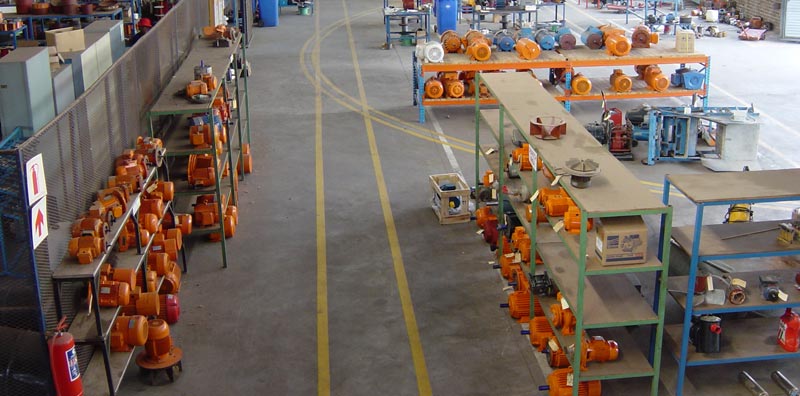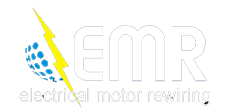
With 43+ years of AC and DC Electrical Motor experience ,we have set new standards in the industry and our customers have enjoyed unparalleled service and quality.
EMR have a large stock of electric motors from 0,15kW up to 500kW.
Our ranges includes :
· Cast Iron Motors
· Pad Mounted Motors
· Aluminium Frame Motors
· Smoke Extraction Motors
· Flameproof Motors
· Brake Motors
· Single Phase Motors
· Two-Speed Motors
· Variable Speed Drives & Soft Starters up to 350kW
· Switchgear We repair & refurbishment DC motors
General Guide To Choosing a Motor
Choosing the right motor for a particular application involves considering various factors to ensure optimal performance, efficiency, and reliability. Here’s a general guide on how to choose a motor:
- Define Application Requirements:
- Load Characteristics: Understand the mechanical load the motor will drive. Consider factors like torque, speed, and acceleration requirements.
- Duty Cycle: Determine if the motor will operate continuously, intermittently, or with variable loads.
- Power Requirements:
- Power (Wattage): Calculate the power required by the motor based on the mechanical power needed for the application.
- Voltage and Current: Ensure the motor’s voltage and current ratings match the available power supply.
- Speed and Torque Requirements:
- Speed Range: Choose a motor with a speed rating that meets the application’s requirements.
- Torque Characteristics: Consider the torque needed for acceleration, deceleration, and maintaining steady-state operation.
- Environmental Conditions:
- Ambient Temperature: Ensure the motor can operate within the specified temperature range.
- Humidity and Dust: Consider the environmental conditions and choose a motor with appropriate protection (IP rating).
- Physical Constraints:
- Size and Weight: Select a motor that fits within the available space and meets weight restrictions.
- Mounting Requirements: Consider the mounting options (flange, foot, etc.) compatible with the application.
- Motor Type:
- AC vs. DC: Choose between alternating current (AC) or direct current (DC) motors based on power supply and application requirements.
- Type of AC Motor: If selecting an AC motor, consider options like induction motors, synchronous motors, or special-purpose AC motors.
- Efficiency and Energy Consumption:
- Motor Efficiency: Consider high-efficiency motors to minimize energy consumption and operating costs.
- Energy-Efficient Ratings: Look for motors with energy-efficient certifications, such as NEMA Premium or IE3.
- Maintenance and Reliability:
- Service Life: Consider the expected lifespan of the motor and its components.
- Maintenance Requirements: Evaluate the ease of maintenance and availability of replacement parts.
- Cost Considerations:
- Initial Cost: Compare the upfront cost of the motor.
- Operating Costs: Consider energy efficiency and long-term operational costs.
- Regulatory and Safety Compliance:
- Ensure the selected motor complies with relevant industry standards and safety regulations.
By carefully considering these factors, you can make an informed decision when choosing a motor that best suits the specific needs of your application.
Choosing The Correct Pump
Selecting the right pump for a particular application is crucial to ensure efficient fluid transfer and optimal performance. Here’s a guide on how to choose a pump:
- Understand the Fluid and System Requirements:
- Fluid Type: Identify the type of fluid (water, chemicals, slurry, etc.) the pump will handle.
- Flow Rate: Determine the required flow rate, usually expressed in gallons per minute (GPM) or liters per second (L/s).
- Head (Pressure): Consider the required pressure or head the pump needs to overcome, often measured in feet or meters of fluid.
- Application Considerations:
- Temperature: Ensure the pump can handle the temperature of the fluid being pumped.
- Viscosity: Consider the viscosity of the fluid, especially if it is not water-like.
- Solid Content: If the fluid contains solids, choose a pump designed to handle them.
- System Configuration:
- Piping System: Consider the size and configuration of the piping system, including the suction and discharge conditions.
- System Pressure: Account for pressure drops in the piping system when determining the pump’s head requirements.
- Pump Type:
- Centrifugal vs. Positive Displacement: Choose between centrifugal pumps (for high-flow, low-pressure applications) and positive displacement pumps (for precise metering or high-pressure applications).
- Specific Pump Types: Within these categories, consider various pump types, such as diaphragm pumps, gear pumps, piston pumps, etc., depending on the application requirements.
- Efficiency:
- Pump Efficiency: Look for pumps with high efficiency to minimize energy consumption and operational costs.
- Variable Speed: Consider pumps with variable speed drives for applications with varying flow requirements to improve efficiency.
- Material Compatibility:
- Material of Construction: Ensure that pump materials are compatible with the fluid being pumped to prevent corrosion or degradation.
- NPSH (Net Positive Suction Head):
- Available NPSH: Check the available Net Positive Suction Head to ensure the pump operates without cavitation.
- Size and Space Constraints:
- Physical Size: Consider the physical size and space available for installing the pump.
- Installation Requirements: Determine if the pump needs to be submerged, mounted, or placed in a specific orientation.
- Cost Considerations:
- Initial Cost: Compare the upfront cost of the pump.
- Operating Costs: Consider energy efficiency, maintenance requirements, and the total cost of ownership.
- Regulatory Compliance:
- Ensure the selected pump complies with relevant industry standards and regulations.
- Reliability and Maintenance:
- Consider the pump’s reliability, ease of maintenance, and availability of spare parts.

